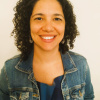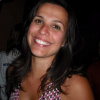About
Authors often call today’s society by “knowledge society” (Hargreaves, 2003), “network society” (Castells, 2005; Hoadley & Kali, 2019), “digital society” (Monteiro, Moreira & Lencastre, 2015), or “learning society” (Coutinho, 2010). These nomenclatures normally represent our society after the emergence and diffusion of microcomputers and the Internet. The DataReportal study (2020) mentions that the number of internet users rose by more than 316 million between January 2020 and January 2021. When studying only social network users, the rise is even more impressive. Even with a great effort from the research in Education (Hargreaves & Giles, 2003; Collins & Halverson, 2009; Coutinho, 2010; Pedro & Matos, 2015; Pedro, 2017) in the study and proposals for reviewing the traditional face-to-face teaching model and with all perceived impact throughout the Covid-19 pandemic on schools and universities (Flores & Gago, 2020; Prata-Linhares et al., 2020; Chirinda et al., 2021), this education model is still, in turn, strongly influenced by the economic, social and cultural events of the 17th and 18th centuries, which were intended to respond to the needs of industrial society.
Pedro and Matos (2015, p. 18) point out in their article that the new educational designs can produce concrete alterations in the architecture, appearance, and physical characteristics of face-to-face classrooms. They inform us that these alterations impact the most varied educational practices. The Virtual Learning Environment (VLE) is a new educational environment in itself, and it already has the potential to alter the teaching methodologies of teachers/professors and tutors, along with providing pre-service teachers with a new learning perspective. However, research on mathematics teachers in distance education demonstrates that VLEs or technological resources are usually used in a shallow and limited way, consisting of video lessons, exercise lists, and information, resulting in little communication between teachers and students (Corrêa & Scheirer, 2013; Gatti, 2014). The participants of the teacher education program did not reach a level of deep reflection in virtual environments, even in instances where communication and collaboration between teachers and students were prioritized (Erixon, 2016). It appears that distance learning programs have not properly used the interactive potential of virtual environments and technological resources. In previous research (Prates, 2022), pre-service teachers, enrolled in a Distance Education (DE) program, reveal unbelievable about this teacher education program prepares them to teach students in a transformative society. They said that they will only be able to learn how to teach new generations when they will be a real teacher in a real school.
The school as a main activity locus of teachers is central to the theoretical perspective that we will adopt throughout this investigation. Situated learning (Lave & Wenger, 1991) focuses on analyzing the professional contexts where learning takes place. These authors call “legitimate peripheral participation” the process that the learners interact with the most experienced, and develop practices shared by the members of the community in which they are inserted. Consequently, in this process of participation, the apprentices gradually become part of the group and share these practices with the more experienced ones. That is, they learn certain functions, acquire a linguistic and acting repertoire, use specific tools, organize routines and actions, and negotiate meanings with the members of the group that can lead them to increasingly central participation in the context in which they are inserted. For example, from this perspective, pre-service teachers enrolled in a teacher education program learn in the process of being engaged in a common domain, the formation of teachers, working in the community, and developing joint practices as future teachers. That is why contact with the school, which currently takes place through supervised internship disciplines, becomes crucial in the initial teacher education. In addition, “situated learning” also encompasses the learner broadly, that is, a whole person in the world, as we will discuss hereafter.
Even more explicitly than in an architecture or engineering course, for example, pre-service teachers enrolled in a teacher education program will necessarily have the same profession as the course’s professors. That is, after five years of training (license plus master’s degree), they will be teachers. Even if we are talking about teacher training for basic education, the practice of higher education professors (related to lesson planning, classes themselves, assessments, investigation, etc.) is much closer to the practice of basic education teachers than of architects or engineers. Some of these future teachers can hold a master’s degree and a doctorate and become professional colleagues (that is, members of the same community of practice as their professors). The teaching profession is very familiar to all of us. Llinares and Krainer (2006) consider mathematics teacher learning, for example, as “[…] a lifelong learning process which starts with one’s own experiences of mathematics teaching from the perspective of a student, or even with mathematical activities before schooling” (p. 429). In this way, all pre-service teachers have already created images about this profession well before entering the course.




